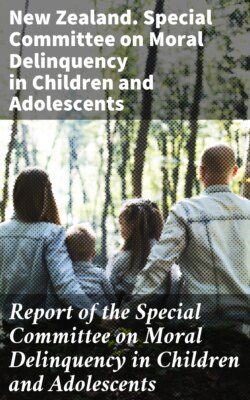Читать книгу Report of the Special Committee on Moral Delinquency in Children and Adolescents - New Zealand. Special Committee on Moral Delinquency in Children and Adolescents - Страница 6
IV. Has Juvenile Immorality Increased?
Оглавление(1) Difficulties of Comparison in Absence of Statistics
In seeking to ascertain whether immorality among children and adolescents has increased or is increasing it should be pointed out that there are not any statistics available either in New Zealand or elsewhere from which reliable guidance may be obtained. Sexual immorality is, by its very nature, a clandestine vice. Any available figures can comprise only such things as detected offences against the law, or registration of ex-nuptial births, or births which have resulted from pre-marital intercourse. Figures are not available concerning immoral acts which do not become the subject of a criminal charge.
Charges of unlawful carnal knowledge or indecent assault arise, for the most part, from complaints made by females. From feelings of chivalry or other reasons it is not in the nature of the male to inform on the female. The common experience is that a charge of sexual impropriety comes from information supplied by the female. So long as a girl is prepared to be silent, the offenders remain unknown. As with older people, so also with children.
Whether sexual laxity has been increasing must be a matter largely of impression based, perhaps, upon inference from certain known facts. On this matter there is room for a wide divergence of opinion. If policemen, teachers, or social workers in the Hutt district had been asked in June of 1954 whether immorality had increased there, they would probably have replied that the wave of 1952 had receded and matters were back to normal. Yet a month later that district had achieved an unenviable, and even unfair, reputation in this respect.
Sad to relate, the cases in respect of which the police took action in the Hutt do not represent the full extent of known sexual immorality among juveniles there. This is shown by the following pieces of evidence:
(a) The office bearers of one Church gave to the Committee particulars of several recent cases which had come to their notice in the ordinary course of their social welfare work (two of them girls who had become pregnant before their sixteenth birthdays). These were cases which had not been investigated by the police. It was also the conclusion of these Church officers that the cases which had been revealed to them were far outnumbered by those which were not so revealed.
(b) It was quite obvious to the police officials who made the investigations in July that no useful purpose would be served by extending their inquiries further.
(2) Unreliability of Available Statistics for Comparative Purposes
The previous section was written to show the difficulty of obtaining a comparison between vice at one period and that at another. This section is to indicate the difficulties which arise in making comparisons (even when figures are available) between different sections of the people at different times and between different groups of people.
(a) Sexual Crime Among Adults
No inference can be drawn from any comparisons between sexual crime of adults and sexual misbehaviour among children. The Committee did, however, examine the statistics of sexual crime in New Zealand to see if there was any marked increase which might throw light upon the conduct of children. From the annual reports which had been submitted by succeeding Commissioners of Police it collated the figures of sexual crime. The table as prepared is set out in Appendix A to this report. A perusal of that table will show that the increase of sexual crime in the years 1920–1953 is not any greater than might reasonably have been expected having regard to the increase in population. In other words, the rate has remained constant. But the great increase in the number of indecent assaults on females (from 175 in 1952 to 311 in 1953) did call for special investigation. At the request of the Committee, these figures were broken down into the several districts in which the crimes had occurred and, as a result, it appeared that there had been an astonishingly big increase in the Auckland district. The Committee has had two separate explanations of this. In the first place, it was explained that the apparent increase was due to a change in the method of compiling the returns in Auckland. On reference to Auckland officials the Committee was informed that the method of compilation had not been changed. Whether or not this type of crime increased substantially throughout the Dominion in one year must, for the present, remain undetermined.
(b) Statistics of Juvenile Delinquency
The figures compiled for the Committee by the Superintendent of the Child Welfare Division show that:
